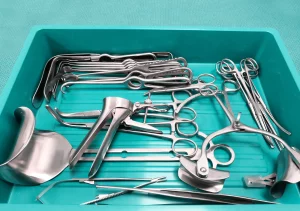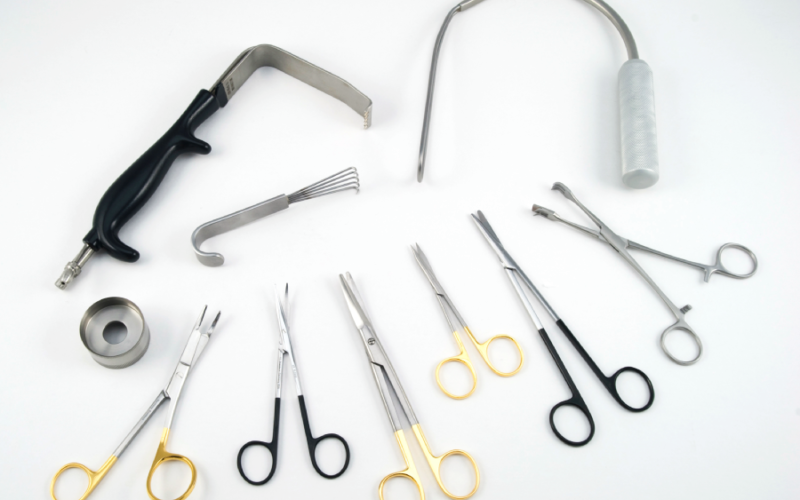Introduction
Surgical procedures are at the heart of modern medicine, relying on precise, reliable, and safe instruments. Among these, plastic surgical instruments have gained prominence for their lightweight design, cost-effectiveness, and versatility. In this article, we’ll explore the different types of surgical instruments, their uses in general surgery, insights from top surgical instruments manufacturers, and how choosing the right tools can improve patient outcomes. Whether you’re a medical professional, student, or health enthusiast, this guide will provide a comprehensive overview of surgical instruments and their evolving role in healthcare.
Understanding Plastic Surgical Instruments
Plastic surgical instruments are medical tools made mostly from special plastics instead of metal like stainless steel. They are often used in small surgeries, quick procedures, or when the tools need to be thrown away after use.
1. Benefits of Plastic Surgical Instruments
- Lightweight: Easy to use for a long time without tiring.
- Cheap: Costs less to make and clean.
- Single-use: Used once and thrown away, which helps stop the spread of germs.
- Non-magnetic: Safe to use during scans like MRI.
2. Common Types
Plastic tools often copy metal ones, such as:
- Scalpels: Sharp blades to make cuts.
- Forceps: To hold tissues gently.
- Scissors: For cutting stitches or soft parts.
- Clamps: To stop bleeding or hold tissues.
For bigger or more difficult surgeries, metal tools are still better because they last longer and are more precise.
General Surgery Instruments: Essential Tools in Every Operating Room
Besides plastic tools, an operating room has many other surgical instruments, some that can be used once and some that can be cleaned and used again. These tools are carefully made to work with tissues, stitches, and organs during complicated surgeries.
Important Instruments
- Scalpels & Blades: For making precise cuts.
- Hemostats & Forceps: To stop bleeding and hold tissues.
- Needle Holders: To help sew up wounds.
- Retractors: To hold open the area being operated on so the surgeon can see better.
Good quality tools are very important because they affect how well the surgery goes. That’s why it’s important to buy from trusted surgical instrument makers.
Choosing the Right Surgical Instruments Manufacturer

Picking a trusted company to make surgical instruments is very important for hospitals, clinics, and doctors. It’s important to think about quality, certifications, and the materials used.
Things to Look For:
- Good Materials: Like stainless steel or strong plastics
- Certifications: Approval from groups like FDA, ISO, or CE
- Custom Options: Can they make special tools for certain surgeries?
- Support & Warranty: Do they offer good service and replacements if needed?
Top manufacturers usually also supply these tools to hospitals around the world and have large catalogs to choose from.
Stainless Steel Surgical Instruments: The Gold Standard
While plastic instruments are gaining popularity, stainless steel surgical instruments remain indispensable in most operating rooms. Their durability, ease of sterilization, and precision make them ideal for invasive surgeries.
Benefits of Stainless Steel Instruments
- High resistance to corrosion and wear
- Can withstand repeated autoclaving
- Suitable for high-pressure, high-precision procedures
Hospitals often use a combination of stainless steel and plastic instruments to optimize efficiency and cost.
Real-Life Examples: Plastic vs Stainless Steel
Consider a minor outpatient procedure like mole removal. Plastic surgical instruments may be preferred for single-use efficiency and sterilization convenience. In contrast, a complex abdominal surgery would require stainless steel instruments for precision and durability.
Case Study: Reducing Infection Rates
A European clinic adopted disposable plastic forceps for minor procedures. Within a year, they reported a 35% reduction in post-operative infections, illustrating the safety benefits of single-use instruments.
Pros and Cons of Plastic Surgical Instruments
| Pros | Cons |
| Lightweight and easy to handle | Less durable than stainless steel |
| Cost-effective | Limited applications in complex surgeries |
| Reduce cross-contamination | May not provide same precision for delicate procedures |
| Non-magnetic, compatible with MRI | Environmental impact due to disposables |
Conclusion
Plastic surgical instruments are revolutionizing modern healthcare by offering cost-effective, safe, and convenient alternatives for minor procedures. However, stainless steel surgical instruments continue to serve as the backbone for complex surgeries, highlighting the need for a balanced approach. Choosing reliable surgical instruments manufacturers ensures quality, compliance, and enhanced patient outcomes.
Investing in the right instruments isn’t just about efficiency; it’s about safety, precision, and advancing surgical care. Explore options, compare suppliers, and consider how integrating both plastic and stainless steel tools can optimize your operating room.
CTA: Share your experiences with surgical instruments in the comments below, or contact a certified supplier today to upgrade your medical tools for safer, more efficient procedures.
FAQs About Surgical Instruments
Q1: Are re plastic surgical instruments safe for all surgeries?
Plastic instruments are generally safe for minor procedures but not recommended for major surgeries requiring high precision.
Q2: How can I find a reliable surgical instruments supplier?
Look for manufacturers with international certifications, positive reviews, and transparent product testing.
Q3: Can plastic instruments replace stainless steel entirely?
No, plastic instruments complement but do not replace stainless steel in complex or long-term procedures.
Q4: How are surgical instruments sterilized?
Stainless steel instruments are sterilized using autoclaves, while plastic disposables are typically pre-sterilized and single-use.












